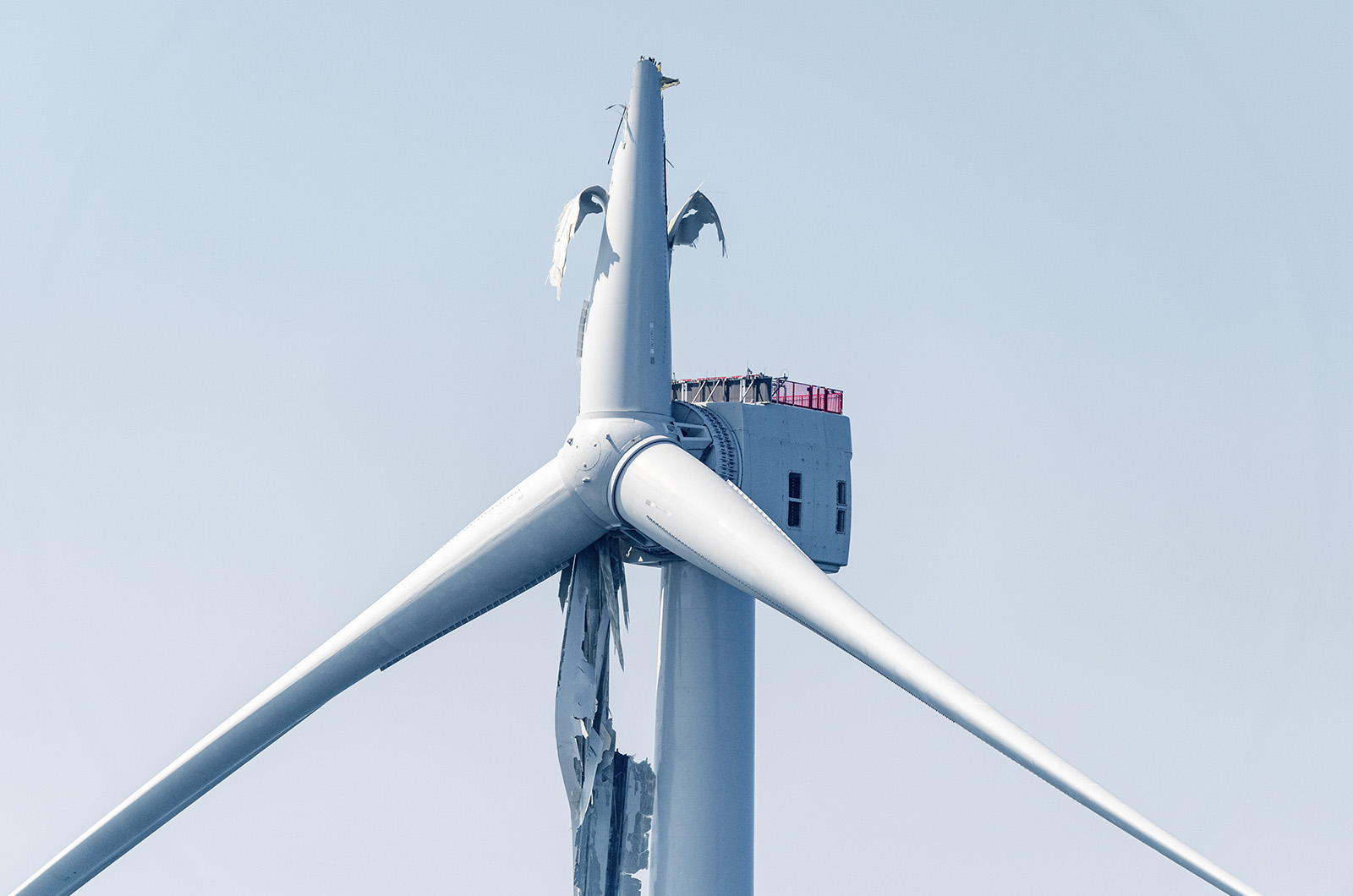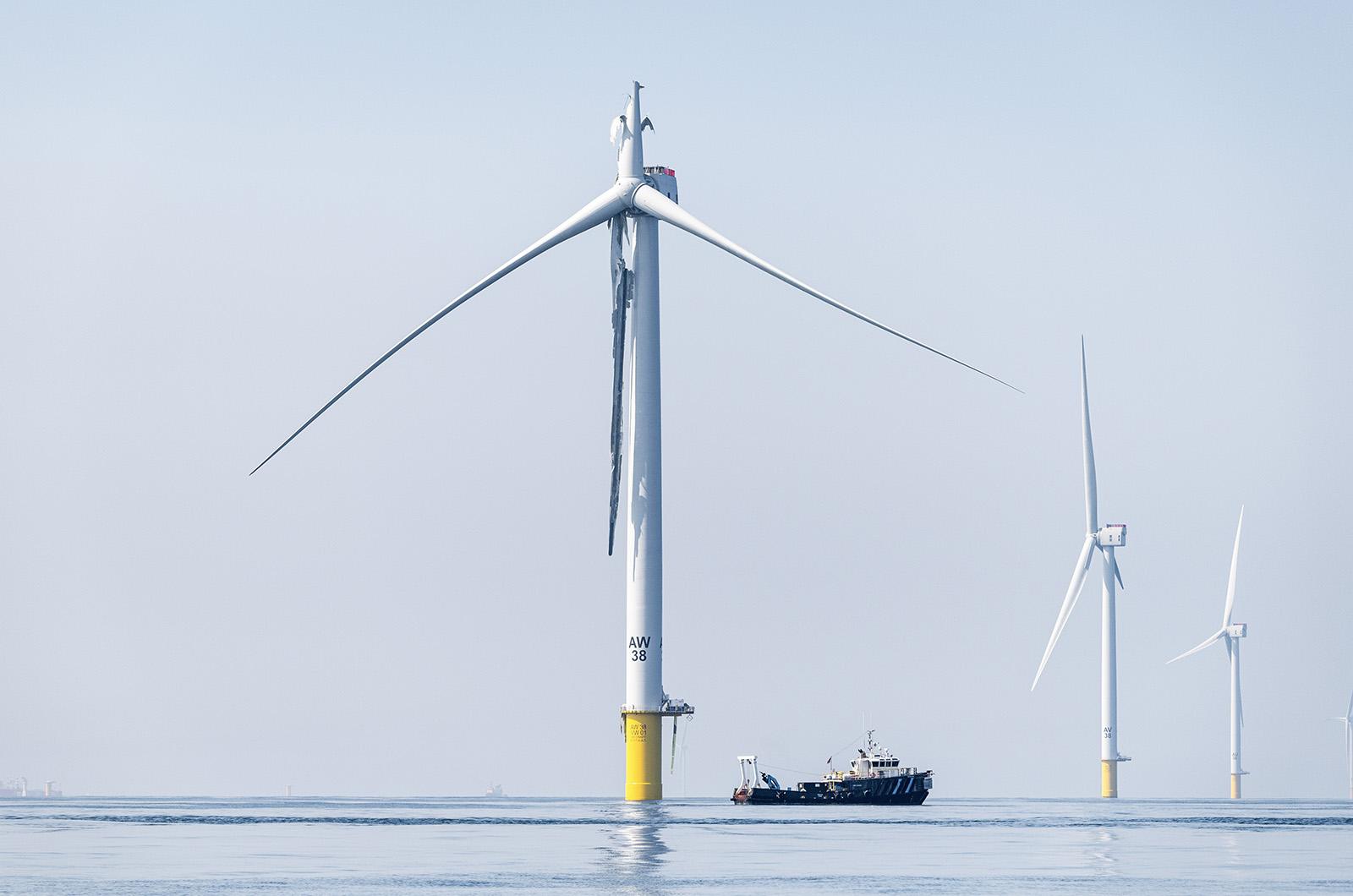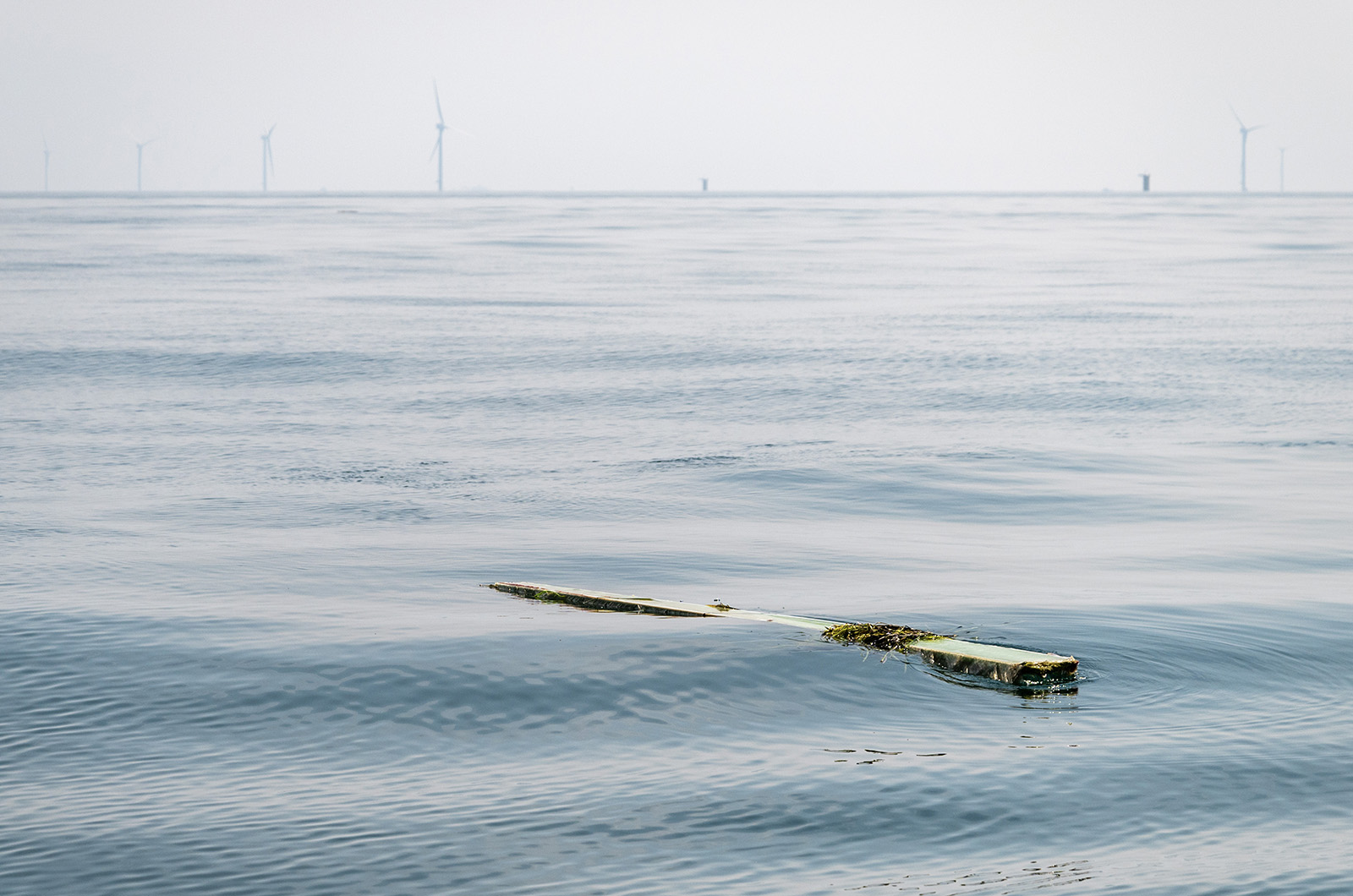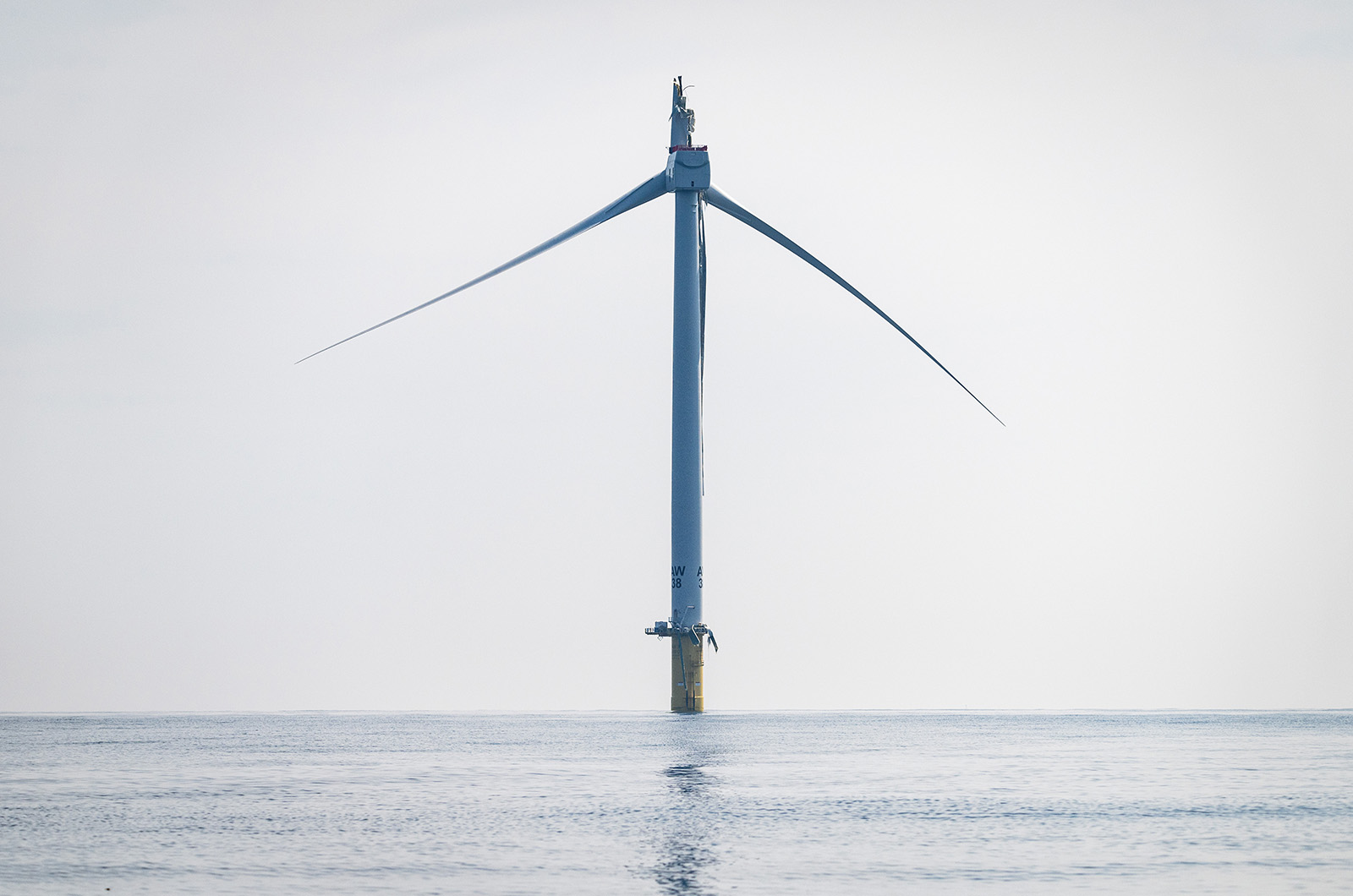Though pieces of the broken Vineyard Wind turbine continued to fall into the ocean south of the Island this week, federal regulators have approved the wind farm to restart some construction work.
On Monday, several sections of the malfunctioning turbine blade that were still attached to the turbine split off and sunk to the ocean floor. Boats were dispatched to the area and both GE Vernova, the turbine manufacturer, and Vineyard Wind were working to clean up the blade pieces and popcorn-sized chunks of styrofoam that had spread into the water.
While Vineyard Wind cannot generate any power from the turbines, the company has turned to other work around the rest of the planned 62-turbine wind farm with the blessing of the federal government.

The Bureau of Safety and Environmental Enforcement, which oversees offshore wind projects in the U.S., had previously said operations at the wind farm 14 miles south of the Vineyard had shut down until further notice after the 107-meter turbine blade broke. On Saturday, the federal agency clarified that Vineyard Wind could do some work not directly connected to the turbines, such as installing cables in the sea floor.
Vineyard Wind submitted plans to the agency to continue tertiary construction. No new work would happen on the broken turbine, and both Vineyard Wind and GE Vernova are still figuring out how to remove the sunken blade.
“In the coming days, GE Vernova technicians and other trained personnel will board turbine generators to perform limited but important maintenance work, and array cable installation will continue outside the 500-meter exclusion zone, all in compliance with the order,” a Vineyard Wind spokesperson said.
The new planned cables would connect the other turbines to the main cables that send power from the wind farm to the New England regional grid on Cape Cod.
Questions about what Vineyard Wind was allowed to do came up last week at the Nantucket select board meeting. Nantucketers reported seeing boats that did not seem part of the safety patrols that were established after the turbine blade broke on July 13.
The divided focus drew ire from some residents.
“What exactly is halted,” asked Veronica Bonnet, a member of the ACK for Whales group. “Because there are a lot of vessels out there, and if I were a Vineyard Wind, I would only have vessels looking for debris and getting that piece of fiberglass off the ocean floor.”
According to BSEE, the original order in the immediate aftermath and the new order from July 28 prohibited generating electricity, or building any more turbines, towers and blades, while the current ones undergo inspections. Other activities, such as cable laying and surveys, would be allowed.
Nearly all of the fiberglass and styrofoam debris from the broken blade has been found in the waters near the turbines or washed up around Nantucket. But John Keene, the president of the Martha’s Vineyard Fishermen’s Preservation Trust, said there have been some reports of styrofoam closer to the Vineyard.
Mr. Keene is a liaison for Island fishermen to Vineyard Wind. He said there was a small piece of foam off Squibnocket Point, and four styrofoam pieces were between Menemsha and Robinson’s Hole. Another large chunk of blade was picked up off Block Island and there was a report of styrofoam on Cuttyhunk, he said.
On Wednesday, Edgartown also found styrofoam on South Beach and Norton Point.
Mr. Keene has compiled some of the debris at his excavation company property in West Tisbury, and Vineyard Wind crews came by and picked it up this week. Vineyard Wind has urged the public to leave disposal to the company, which is also weighing it to see how much is left in the ocean.
“It’s super important to track,” Mr. Keene said. “They are trying to gather where everything is spread.”
As BSEE and GE Vernova continue to investigate the cause of the turbine failure, one local lawmaker is calling on the federal government to have stronger protocols to alert towns and tribes when something goes wrong.
U.S. Rep. Bill Keating, a Bourne Democrat, sent a letter to BSEE last week after Nantucket select board members felt out of the loop when the Vineyard Wind turbine broke and they weren’t told until two days later.
“In the event of a future incident within the wind energy lease area, BSEE should immediately inform all state, local and tribal officials in affected communities regarding the nature of the incident and any potential impacts that might follow,” he wrote.
Here on the Vineyard, Wampanoag Tribe of Gay Head (Aquinnah) tribal council chair Cheryl Andrews-Maltais said the tribe never received a direct report from the government after the blade broke.
The lack of notice was worrisome because the tribe has long been anxious about the proliferation of offshore wind energy and she demanded the federal government do better in the future.
“The lack of communication in this instance is unacceptable and undermines our trust in the regulatory processes meant to protect our environment and communities,” Ms. Maltais wrote in a letter to BSEE. “And it is an abject dereliction of the Federal Trust and Treaty obligations owed to us as Tribes and Tribal Governments.”









Comments
Comment policy »